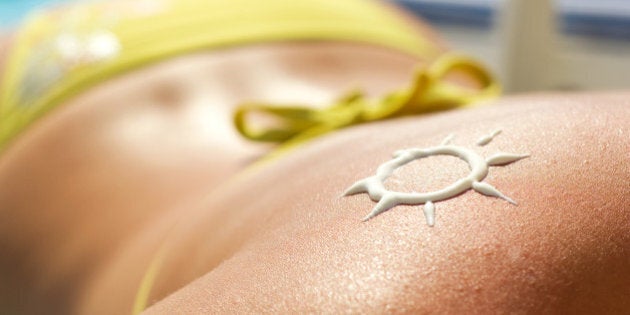
The year I graduated from high school there was a popular song on the radio, "Everybody's Free (to Wear Sunscreen)." It was a feel good poem that espoused Pinterest-worthy injunctions and an "above all else" warning that if the author could provide just one piece of advice "sunscreen would be it." I agree.
When it comes to someone's health, the things I am most interested in understanding are the habits and exposures that happen on a daily basis. By now, we are familiar with the dangers that ongoing exposure will have on our skin. Burns, accelerated aging and skin cancer are the three most motivating reasons to cover up under the sun. In the last four years I have treated three patients under 30, who had been diagnosed with melanoma, the most dangerous and frequently deadly form of skin cancer. One of these individuals, sadly, succumbed to the disease.
Sun exposure is no joke. It is not to be taken lightly. Tanning salons and oils irk me with the same intensity as marketing fast food to children. Since 1970, the incidence of Melanoma has nearly tripled, while most other cancers are in retreat.
Selecting a sunscreen should be as simple as choosing an appropriate SPF and slathering your skin. Unfortunately, as the market has grown, so too has the plethora of novelty applications and unhealthy ingredients. Here is a breakdown of what you should know.
- Wear sunscreen. I really don't care if you look better with a healthy glow, I promise, your will look worse with saggy face wrinkles.
- Don't be fooled by high SPF sunscreen. SPF refers to Sun Protection Factor. Specifically, SPF denotes the protection afforded against UVB rays, the ones responsible for burning. Burn protection starts with an SPF of 15 and basically maxes out with an SPF of 50. SPF sunscreens high than 50 offer a very small incremental benefit and are being studied for safety in many European countries. If you need an SPF greater than 50, you need to cover up and stay out of the sun.
- Buy "Broad Spectrum" Sunscreen. UVB rays are responsible for burns, but have less of a role in penetrating deeper into the skin, contributing to aging, immune dysfunction and possibly cancer. The deeper penetrating rays are UVA rays. Look for a sunscreen that offers "broad spectrum coverage," meaning, both UVA and UVB protection.
- Avoid Aerosol Sunscreen. I am famous for missing significant areas of my arms and legs while applying sunscreen and I was hoping that aerosol options would solve this challenge. Nope. The problem with aerosols is not with their coverage, but with their ingredients. The sun protection technology that prevents sunscreen from looking white on your skin is not the safest concoction of chemicals -- especially when they reach your blood stream. Aerosol sunscreen results in the inhalation of these dangerous ingredients. This is especially problematic in kids.
- Omit Oxybenzone. Oxybenzone is a chemical that helps absorb UV rays. According the Environmental Working Group, 56 per cent of sunscreens contain oxybenzone. EWG and many toxicology experts warn the oxybenzone can be absorbed through the skin and has been linked to hormone disruption (think BPA and plastics) and potential cellular damage that may lead to skin cancer (insert sad irony here).
- Sun and bug repellent should not go hand in hand. Effective sun care requires that you reapply sunscreen every few hours. Bug repellents should not be applied more than every six hours. Don't expose yourself to unnecessary chemical more frequently than you need to.
- In a nutshell. Limit excess sun exposure at peak hours (10:30 a.m. - 3 p.m.). Use a broad-spectrum sunscreen (UVA and UVB protection). Select an SPF product between 15 and 50. Don't be skimpy with the slather. Reapply after bathing, sweating and generally, every three hours. See how your sun care product rates on the EWG's sun care guide. (A truly incredible resource).
We have waited and waited and... waited for our summer to arrive. Get out and enjoy this well deserved weather, just do it while practicing safe sun!
ALSO ON HUFFPOST:
